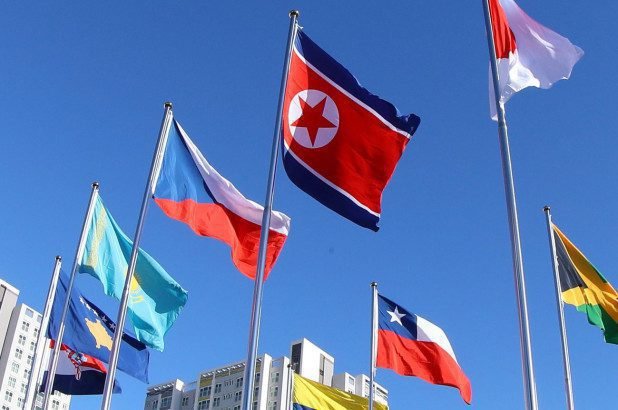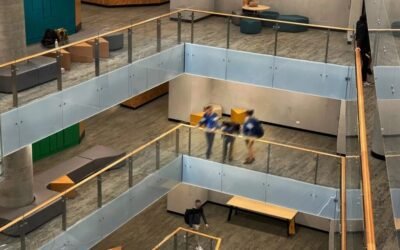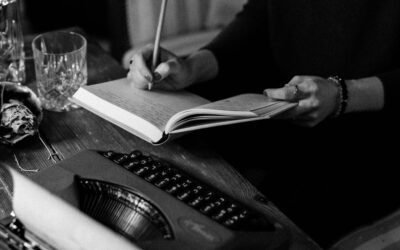By Niall Clugston:
It was like a scene from Bridge of Spies – a recent film most notable as the vehicle for Mark Rylance’s Oscar-winning performance as best supporting actor. There was a traffic jam – a rare sight in North Korea. A uniformed man had jumped out of his car, apparently impatient. Our bus stopped, and we were informed that we would need to get out. Back in Beijing, we’d witnessed the city being hit by the worst deluge in 60 years. The storm had evidently crossed Korea too, with flood waters smashing the bridge between Pyongyang’s airport and the city centre. Only one lane was open. We would have to walk to the air-conditioned coach waiting on the other side of the river.
So we collected our luggage and headed across the bridge. I couldn’t help but recall the prisoner swaps that occurred on bridges during the Cold War, such as the Glienicke Bridge between East and West Germany featured in Bridge of Spies. The Korean equivalent was – and is – the Bridge of No Return, featured in the James Bond film, Die Another Day. But this was very different. We were tourists, and there was no tension, except for our British guide imploring us not to take photos. I quickly saw why.
This was my first sight of the feared North Korean army. Below us in the river was a swarm of boys in their long johns, sandbagging the broken bridge. They looked like they were having lots of fun. As we looked at them, they looked at us – curiosities through the looking glass. They waved. We waved back.
“Hiya!” called out our guide. “Hiya!” I took a while to work out she was speaking British, not Korean.
“If we did take a picture, it would win a Pulitzer!” I said.
“Maybe so, but you can’t take a photo!!!” the guide replied.
My trip to North Korea – which the regime calls the Democratic People’s Republic of Korea (DPRK) – was controversial. My dad asked me why I wanted to go to a place that other people were trying to get out of. I went because I was interested in the history of Korea, Communism, and the Cold War. I went because I wanted to see it for myself. Some people say tourism is propping up the regime, but clearly the trickle of Western visitors couldn’t do that. In any case, if there was a time machine, would it be immoral to visit Stalin’s USSR or Hitler’s Germany?
Please don’t interpret me as denying that I went on a “propaganda tour”. Our itinerary was clearly designed to showcase the place. On a smaller scale, it was like the socialist propaganda tour that Che Guevara and the Black Panthers went on in the ‘60s. But I don’t think they switched all the lights on for the odd dozen in my tour group. I don’t think I’m that important. Nor was the itinerary particularly well “choreographed”: for example, when we visited a microbrewery, there was scaffolding in the stairwell and they couldn’t find a private room. We ended up sharing a room with locals.
And there was plenty of evidence of an ongoing economic crisis, which they call the “Arduous March”. According to the World Food Program, there is no famine now. Many people are scrawny, but not all. For instance, our North Korean female guide was described as “fat” by a big-mouthed colleague. To be honest, she was slightly plump. An American man in our group threatened to punch him.
“Bar-room brawl in North Korea!” I said. But it never eventuated…
My take-home lesson from the trip, is that I will never trust any information about North Korea. I haven’t been brainwashed by North Korea’s over-the-top propaganda: no, as I said when I came back, I’ll never believe anything anymore. I don’t consider myself an expert after a few days there. Actually, I’m one of the few people who talk about North Korea who doesn’t consider him or herself an expert.
People often say it is hard to get into North Korea. I think I disproved that. They say journalists are banned, but Associated Press now has an office there. They also say that visitors are confined to Pyongyang. In fact, I travelled the length of the country, from the border with the South Korea – the famous DMZ (Demilitarised Zone) – to the border with China, by road and rail. On the train, I shared the compartment with two North Koreans who were travelling into China on “business”. One of them went out of his way to help me with North Korean border security. The other asked me to help him through the Chinese equivalent.
It is often said that North Korea doesn’t have electricity. Many people have seen the satellite photo which shows the country engulfed in darkness. Yes, we experienced blackouts when staying in Kaesong. But the railway line is electrified, and there is enough power in Pyongyang to run a metro, trams, trolley buses, a bowling alley, a fun park, and a revolving restaurant on the top of the Yanggakdo Hotel where I stayed. People who think these were staged for my benefit are brainwashed or paranoid.
Some people describe the DPRK as fascist or Confucian. In fact, the regime is a carbon copy of Stalin’s USSR, perpetuated into the 21st century. The army is certainly very large, partly because the Korean War has never been resolved. The army also functions as a mobile workforce, deployed for construction projects, emergencies, and agriculture. I hardly saw anyone carrying a weapon, though there was a man at the DMZ armed with a submachine gun and smoking a cigarette, and a teenage girl with an AK-47 – with bayonet fixed – guarding an artists’ studio in Pyongyang!
The North Korean countryside is often described as bleak and barren. I went in summer, and it was the greenest place I’d ever seen. But in winter it’s blanketed with snow. The country is 80% mountains, with cultivation confined to the narrow coastal strips. Most of the mountains are covered in forest. Even travelling along the coast I saw vast pine forests.
Despite Bill Clinton calling the DMZ the “scariest place on earth”, I was shocked at how laid-back the North Korea soldiers were. There is even a gift shop. I went to the DMZ and all I got was a T-shirt! A lot of the DPRK’s million troops seem to be teenagers goofing off.
My favourite memory came when travelling north from Pyongyang, standing in the corridor of the rail carriage, looking across the fields. A couple of children were standing on a dyke, waving at the train. I waved back. A small boy spotted me – a tall white man – and literally jumped for joy. When people talk about nuking North Korea, I think of him. To quote the cliché, children are the future. I hope he dies, not by bombs, or starvation, but at a ripe old age in a prosperous, peaceful, reunited Korea. I think we can all agree on that – and that includes Kim Jong Un.



